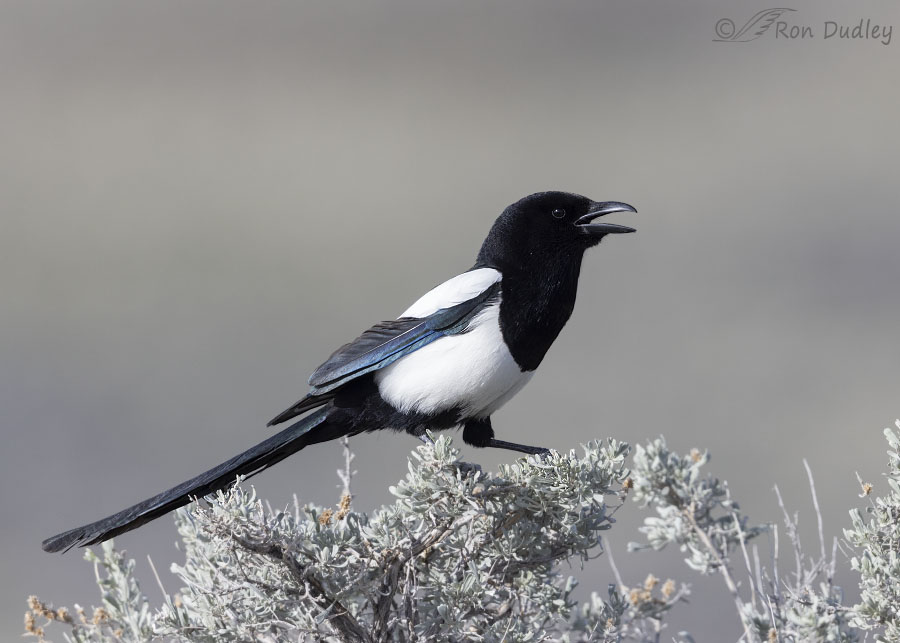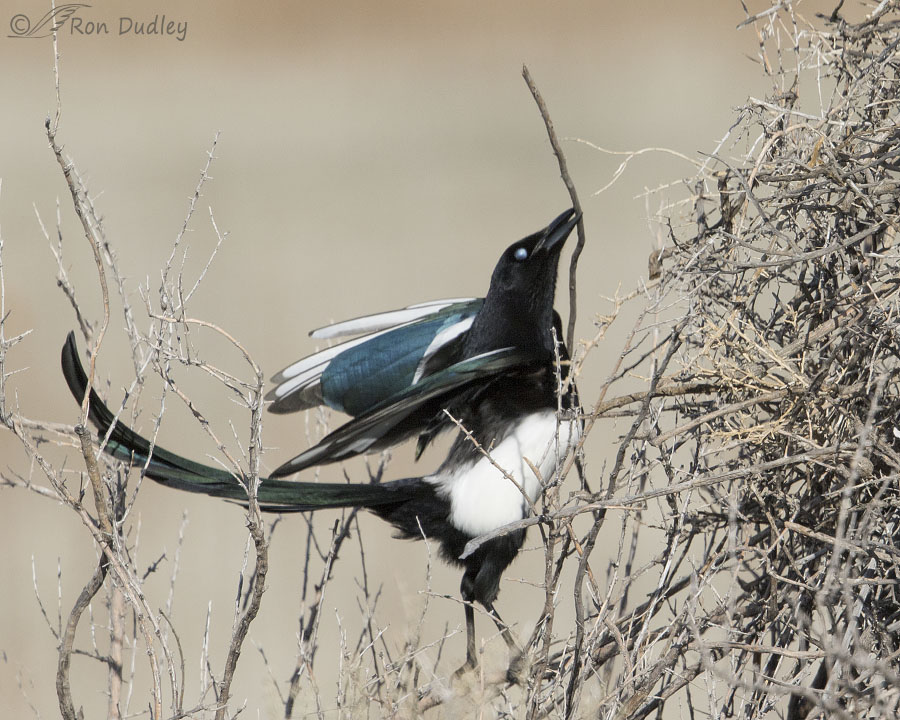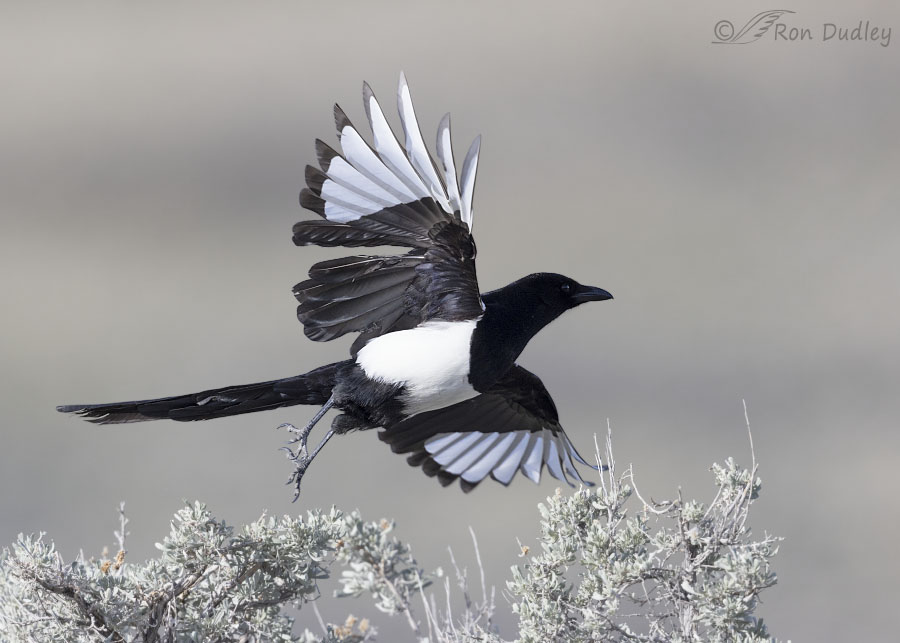Including my attempt at another documentary video clip.

1/3200, f/6.3, ISO 800, Canon R5, Canon EF500mm f/4L IS II USM + 1.4 tc, not baited, set up or called in
Five days ago on Antelope Island this Black-billed Magpie allowed me an unusually close approach. The light wasn’t very good so I had a hard time getting any detail in the blacks but ‘he’ seemed kind of excited about something so I kept him in my viewfinder just in case something interesting happened.
One of the first things I noticed was that some of the feathers on his right wing seemed to be in disarray for some unknown reason. But soon I became more interested in one of his behaviors – he was constantly flashing his nictitating membranes.
I’ll get back to this guy in a minute but first, more about nictitating membranes.

Most of my readers already know that birds have a third eyelid, the nictitating membrane or nictitans, that helps to keep the eye moist and clean and guards it from wind and dust but it also functions to protect the eye from injury. This older photo shows a magpie with its nictitans closed to protect its eye while it’s attempting to manhandle (birdhandle?) a cumbersome twig into its nest.
But a few birds apparently use their membranes as a means of communication. The nictitans in most species is translucent, with little to no color, but in a few birds like dippers and magpies the membrane is almost shockingly white and very easy to see (here it has a bluish cast). As far as I can tell there’s no conclusive evidence (so far) that dippers use their membranes to actually communicate but we’ve known for some time that magpies use their membranes to interact and communicate with other magpies.
Magpies flash their membranes at other magpies to establish dominance. Often, though not always, only the membrane on the side facing the opponent is flashed.
OK, back to the magpie in the first photo. While I had him in my viewfinder I noticed that he was almost constantly flashing his membranes so I switched over to video rather than still photos for a brief period to see if I could document the behavior. There were two other magpies in the same general area so I presume he was flashing at one or both of them.
I’m still a rank amateur at video but here’s a link to the 41 second clip. It’s one thing to see the membrane closed in still photos but I think it’s even more interesting to see the behavior repeated again and again in video. As a bonus you’ll be serenaded intermittently by meadowlarks as you watch the clip. I hope you do.
Oh, and guess what?

When the magpie took off the reason for his wing feathers being in disarray was revealed. Apparently he’s molting asymmetrically.
Ron


I had no idea that the NM had, as Marty put it, a Morse code function. One might think that other species would do this, being that all birds have them. At least other covids, being as smart as they are.
I slowed the video to 1/4 speed and even then could barely detect the front to back motion.
It’s definitely a fast flash, Lyle.
Great series. Fortunately, this flasher is keeping most of his plumage on.
Nanci, there are flashers and then there are flashers!
The magpies in our yard are great fun to watch. And now I have another behavior to look out for! Thanks for the lesson.
Carolyn, I really miss the magpies that used to nest in my big elm tree – the one I had to remove.
Oh my. I was also very interested in the magpie’s vocalisations which are sooooo different from those of our magpies, which you can hear here. The meadowlarks in the background were a bonus. Triple treat. Thank you.
That’s an interesting call from your magpie, EC.
The ‘chirping’ my magpie was doing was one of many very different sounds these magpies make – many of them much louder and potentially annoying than what you heard in the clip.
It’s almost as if the magpie is providing a contra point to the meadowlark’s song.
Almost, Arwen. Almost…
Magpie Morse code! Love the meadowlark singing in the background as “birdo continuo” to the magpie’s more staccato chirps.
“Magpie Morse code”
That’s a very good way to describe it, Marty. Wish I’d thought of it.
A post with Magpies and Meadowlarks? Be still my heart! Wonderful start to the day. Thanks, Ron!
I thought the singing meadowlarks were a nice touch. Thanks, Diane.
Always appreciate the Magpie photos. Very interesting about the flashing membrane. Watched the video. Sure seems like some sort of communication.
Thanks, Everett.
I was fascinated by your capture of the “flashing”–against the deep black
of his head-feathers, it actually DOES appear like tiny lightning flashes…..
Once again, you’ve educated and surprised me– first thing in the morning !
“Once again, you’ve educated and surprised me– first thing in the morning”
Good. Thanks, Kris.
So lovely. Thank you!
Thanks, Meg.
The flashing nictitating membrane certainly show up well again the black of the magpie! Excellent communication “device” I would say…. 🙂 Quite a “gap” where he’s molting – almost looks like something got hold of it at random and gave it a yank….. 😉 They’re on my “list” at the moment as a nest is going up close to the house……. 🙁
Judy, at first I thought it might be an injury but it looks like that one shorter feather is still growing in and he can fly normally so my guess is that it’s molt.
Thanks for sharing the video of the behavior. A nice addition to your great photos.
Thanks, Brett. Much appreciated, especially coming from you – a video expert.
That’s very rapid communication as the membrane is across the eye only briefly. Interesting when he turns his head and the other eye’s membrane is closed. This is so fast, I don’t think I could catch it in the field unless the bird was very close to me.
Pam – yes, it’s fast but birds do a lot of things fast. I was unusually close to the bird, especially looking through my long lens, so for me it was easy to see. Even hard to ignore.